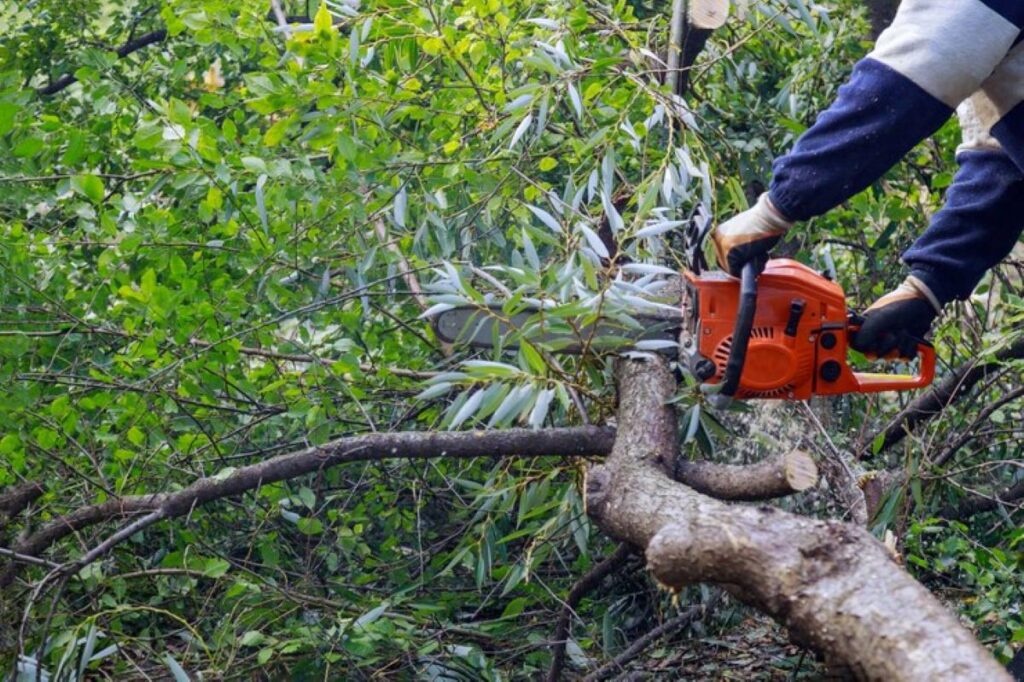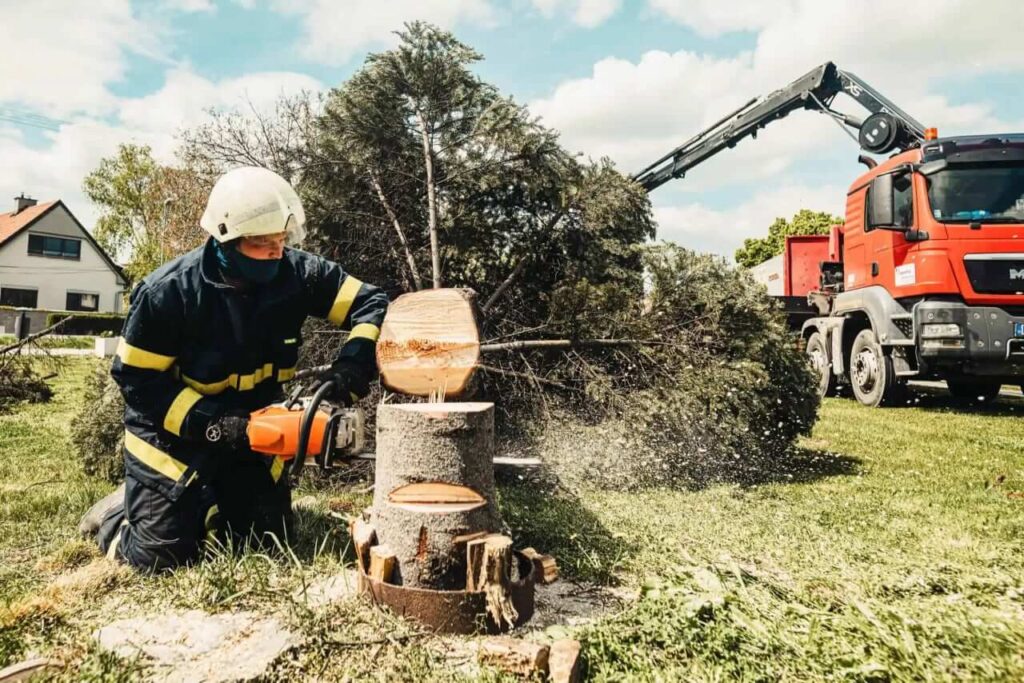When it comes to maintaining the health and safety of your property, tree removal can sometimes be a necessary step. Whether due to disease, damage, or simply the need for more space, finding a reliable tree removal service is crucial. This article will guide you through the process of identifying trustworthy professionals in your area, ensuring that your tree removal needs are met with care and expertise.
Understanding the Importance of Professional Tree Removal
Tree removal is not just about cutting down a tree; it involves a comprehensive understanding of tree biology, safety protocols, and environmental considerations. Hiring a professional service ensures that the job is done correctly and safely, minimising risks to both people and property.
Safety First
One of the most significant reasons to hire a professional tree removal service is safety. Tree removal can be hazardous work, particularly if the tree is large or situated near buildings, power lines, or other structures. Professionals are trained to handle these risks, employing the right equipment and techniques to ensure that the removal is carried out safely.
Moreover, professionals are equipped with safety gear, including helmets, gloves, and harnesses, which protect them from potential accidents. Attempting to remove a tree without proper training or equipment can lead to serious injuries or damage to property. Additionally, professionals are trained to assess the tree’s condition and the surrounding environment, identifying potential hazards such as unstable branches or hidden obstacles that could complicate the removal process.
Environmental Considerations
Tree removal can have significant environmental implications. Professionals are knowledgeable about local ecosystems and can advise on the best practices for tree removal without causing undue harm to the surrounding environment. They can also provide guidance on replanting or landscaping options that promote biodiversity.

In some cases, tree removal may require permits, especially if the tree is protected by local laws. A reliable tree removal service will be familiar with these regulations and can assist you in navigating the necessary paperwork. Furthermore, they can help you understand the ecological impact of removing a tree, including how it affects local wildlife and soil health. By opting for a professional service, you not only ensure the immediate safety of your property but also contribute to a more sustainable approach to tree management, which is increasingly important in our changing climate.
How to Identify Reliable Tree Removal Services
Finding a trustworthy tree removal service can be daunting, especially with the multitude of options available. However, there are several key factors to consider that can help narrow down your choices.
Research and Recommendations
Start by asking friends, family, or neighbours for recommendations. Personal experiences can provide valuable insights into the quality of service offered by local companies. Additionally, online reviews and ratings on platforms such as Google or Yelp can help gauge a company’s reputation.
Once you have a list of potential services, conduct further research. Check their websites for information on their qualifications, experience, and the range of services they offer. A professional website can indicate a commitment to quality and customer service. Furthermore, consider reaching out to local gardening clubs or community forums, where members often share their experiences and can point you towards reputable services that they have used in the past.
Verify Credentials and Insurance
Before hiring any tree removal service, it is essential to verify their credentials. Look for certifications from recognised organisations, such as the International Society of Arboriculture (ISA) or the Tree Care Industry Association (TCIA). These certifications demonstrate that the company adheres to industry standards and best practices.
Equally important is ensuring that the company carries adequate insurance. A reputable tree removal service should have both liability insurance and workers’ compensation coverage. This protects you from potential financial liability in case of accidents or damages during the removal process. Additionally, it may be beneficial to ask for references from previous clients. Speaking directly to those who have utilised the service can provide further assurance of the company’s reliability and professionalism. A company that is confident in its work will be more than willing to share this information with you.
Questions to Ask Potential Tree Removal Services
Once you have narrowed down your list of potential tree removal services, it is time to reach out and ask some critical questions. This step is vital in ensuring that you choose a company that meets your needs and expectations.

What is Your Experience with Tree Removal?
Inquire about the company’s experience with tree removal, particularly in situations similar to yours. A company with a proven track record in handling various tree removal scenarios is more likely to provide a safe and efficient service.
Ask for examples of previous work, and if possible, request references from past clients. This can provide you with a clearer picture of the company’s reliability and professionalism.
What Equipment Do You Use?
The type of equipment used by a tree removal service can significantly impact the quality and safety of the job. Inquire about the tools and machinery they employ, ensuring they are modern and well-maintained. A professional service should have access to equipment such as chainsaws, stump grinders, and chippers, which are essential for efficient tree removal.
Additionally, ask if they have the necessary safety equipment and protocols in place. A reputable company will prioritise safety and have procedures to protect both their workers and your property.
Understanding the Cost of Tree Removal Services
Cost is often a significant factor when choosing a tree removal service. However, it is essential to understand what influences pricing to ensure you are getting a fair deal.
Factors Affecting Cost
Several factors can affect the cost of tree removal services, including:
- Tree Size: Larger trees typically require more time and resources to remove, resulting in higher costs.
- Location: Trees located near structures, power lines, or in hard-to-reach areas may incur additional charges due to the increased complexity of the job.
- Health of the Tree: Diseased or damaged trees may require special handling, which can also affect the price.
- Stump Removal: If you require the stump to be removed or ground down, this will typically add to the overall cost.
Obtaining Quotes
It is advisable to obtain quotes from multiple tree removal services before making a decision. This not only gives you a better understanding of the average cost but also allows you to compare the services offered. Ensure that the quotes are detailed and include all aspects of the job, such as cleanup and disposal of debris.
Be wary of quotes that seem unusually low, as they may indicate a lack of experience or hidden costs. A reliable service will provide a transparent and comprehensive estimate.
Post-Removal Considerations
Once the tree has been removed, there are several post-removal considerations to keep in mind. These can greatly impact the overall outcome of the project and your property’s appearance.

Site Cleanup
Ensure that the tree removal service includes site cleanup in their quote. A professional company should remove all debris, including branches, leaves, and the stump, leaving your property tidy and safe. If stump removal is not included, discuss options for grinding the stump down or removing it entirely.
Future Landscaping Options
After a tree has been removed, the landscape may require some adjustments. Consider discussing future landscaping options with the tree removal service or consulting with a landscape designer. This can help you make the most of the newly available space and enhance the overall aesthetic of your property.
Conclusion
Finding a reliable tree removal service is essential for ensuring the safety and health of your property. By understanding the importance of professional services, conducting thorough research, asking the right questions, and considering post-removal options, you can make an informed decision that meets your needs.
Investing time in finding the right tree removal service will not only provide peace of mind but also contribute to the long-term health of your landscape. With the right professionals by your side, you can navigate the challenges of tree removal with confidence.

























